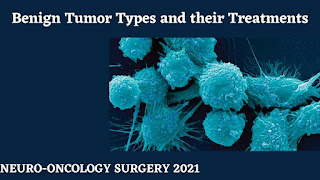Do you know what the most prevalent types of brain tumours are?
There are over 130
different forms of brain and central nervous system tumours, ranging from
benign to malignant, exceedingly rare to reasonably common.
Metastatic
Metastatic brain
tumours are the most frequent type of brain tumour in adults. They are
classed as secondary brain tumours because they develop from cancer that began
elsewhere in the body and migrated to the brain. The exact incidence rates are
unknown; however, the American Brain Tumor Association believes that between
200,000 and 300,000 metastatic brain tumours are detected each year. Lung or
breast cancer is the most common cause of metastatic malignancies. Larger
metastatic tumours are frequently surgically excised (meaning removed), whereas
smaller tumours may be treated with a gamma knife, a type of radiation therapy
that focuses 200 tiny beams of radiation onto the tumorous area.
Meningioma
Because they grow in
the meninges, which are the membranes that line the skull and spinal canal,
these tumours are not really brain tumours. However, their development may have
an impact on the brain, resulting in a variety of problems such as vision and
hearing impairment, memory loss, and even convulsions. Meningioma cases surge
with age, and the tumours grow slowly, thus symptoms may appear gradually over
time. If the tumour begins to impair one's quality of life, doctors will either
surgically
remove it or treat it with radiation therapy. Chronic headaches are the most
prevalent early indication of meningioma.
Glioblastoma
Despite being the third most frequent type of brain tumour, glioblastoma
is the most frequent primary brain tumour, meaning it begins in the brain. It's
also the most dangerous. Every year, around 15,000 new cases of glioblastoma
are identified, with average survival rates ranging from 11 to 15 months. To
combat glioblastoma, a variety of treatment techniques, including surgical
resection, radiation therapies, and chemotherapy, are frequently used.
Astrocytoma
These primary tumours begin in star-shaped cells called astrocytes, which
are found in the cerebrum of the brain. The grade of astrocytoma tumours
varies, indicating their level of malignancy and aggressiveness; some develop
slowly (Grade II), while others develop more aggressively (Grade III). Surgery
is always used to treat astrocytomas, and chemotherapy and radiation therapy
are used on occasion. According to the
American Cancer Society, the survival rate for low-grade astrocytomas is around
68 per cent for patients aged 20 to 44, and drops to 44 per cent for individuals
aged 45 to 54.
Persistent headaches
are the most prevalent early symptom of a brain tumour. Having said that,
headaches are a rather common occurrence in everyday life. There are various
ways to distinguish a typical headache from one caused by a greater disease,
such as a brain tumour.
Some warning
indications would be if your headaches become more frequent and powerful over
the course of a few days or weeks, and if your headaches became so severe that
they woke you up while you were sleeping. If you have no history of persistent
headaches and suddenly start getting these headaches, it is something to be
concerned about.




Comments
Post a Comment